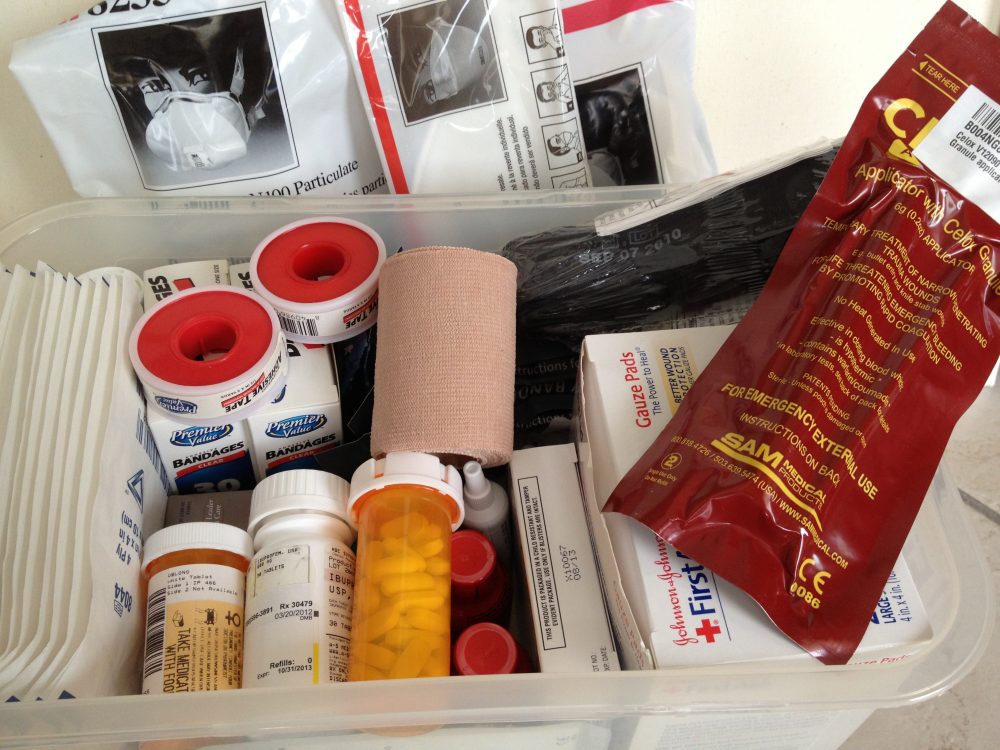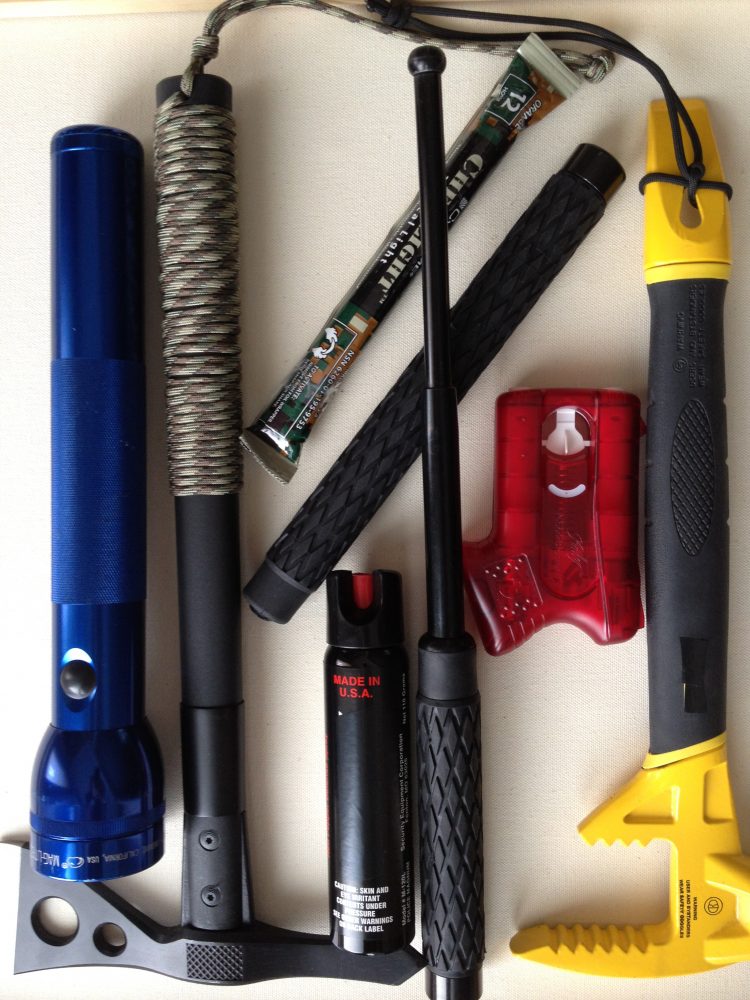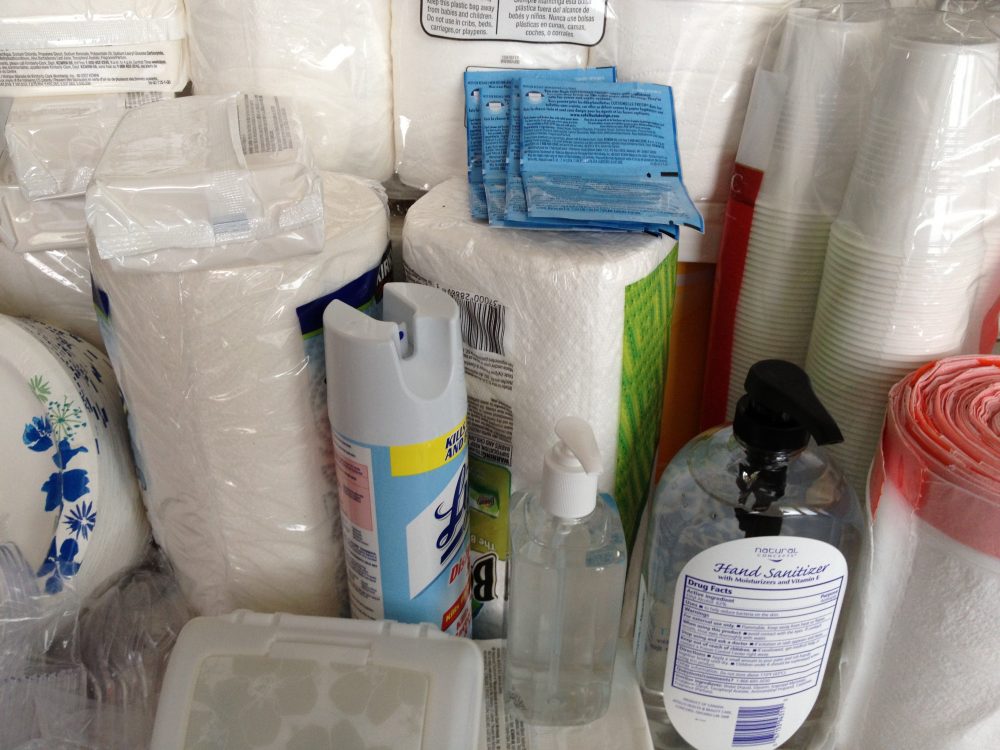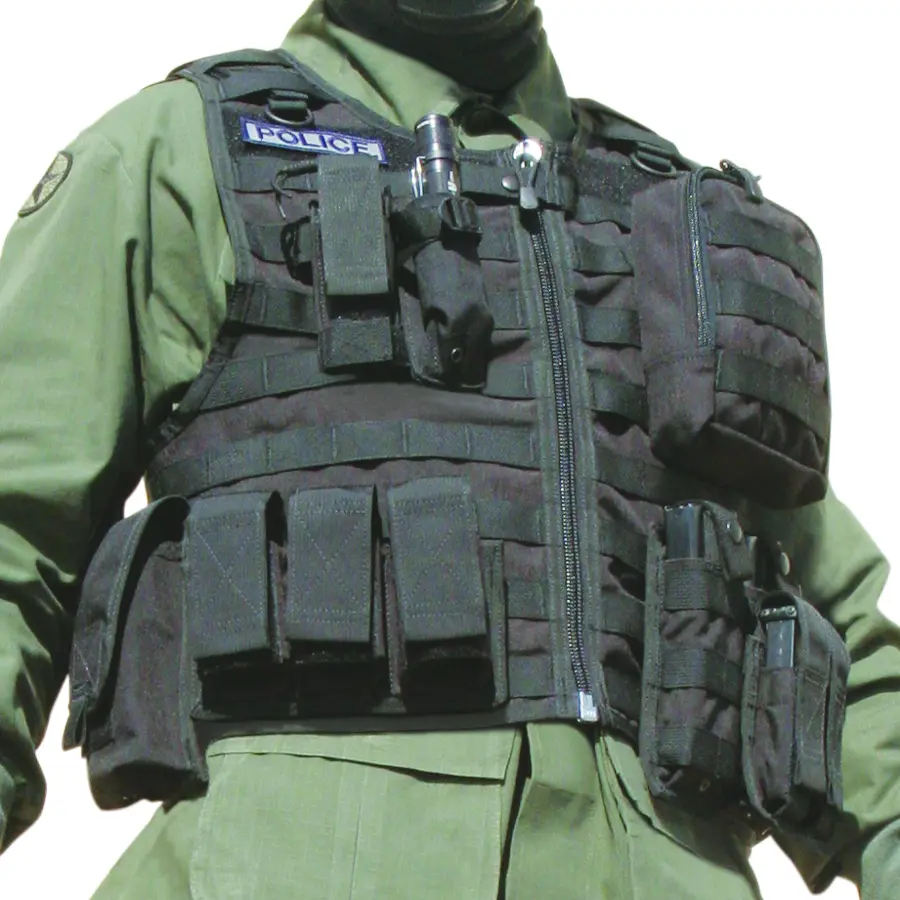Meals Ready to Eat (MREs), camping-style pouch foods, and high-energy cereal bars are best for sheltering in place. Heat-and-eat options work well—and in a worst-case scenario, they can also be eaten cold.
What started off as a normal day is turning out to be anything but. Something is terribly wrong. News reports are vague, but early indications point to a massive failure of key computer networks that run the nation’s power grid. In your neighborhood, power is failing, traffic is at a standstill, and most businesses are anxiously closing their doors and sending their employees home.
People are in a panic, and grocery store shelves are being stripped clean. Lines at the few gasoline stations still operating are very long. There are reports of extensive looting and widespread attacks on stranded motorists and other innocents caught in the middle of the growing pandemonium.
This appears to be a very good time to gather up the family and bug out, right?
Probably not!
Bugging out is a survival term that commonly refers to the act of leaving wherever you happen to be, usually with some sense of urgency, and evacuating to a safer, more secure location. But before you load up the bug-out vehicle(s) or strap on your bug-out bag and head for the hills, take a moment to carefully consider your options.
Water is the first line of defense during any bugging-in scenario. Maintain a minimum supply of two gallons per person per day—more in hot weather. Also keep supplies to disinfect suspect water, including iodine 2% and purification tablets.
Table of Contents
THE BUGGING-OUT FANTASY
Many of us have been conditioned to think in terms of quickly getting out of Dodge at the first sign of trouble. Some would define it as the fight or flight reaction. We see a threat, real or perceived, and we stand and face it head on, or we run in the opposite direction.
At first glance, getting out of an urban environment may seem to make perfect sense, because everybody knows that large population centers are among the most dangerous places to be after any major disaster. The lack of food and water, plus masses of unprepared, often desperate people combine to form the perfect storm of large-scale public panic and civil unrest.
On the other hand, bugging-out offers few (if any) guarantees. Once you leave the relative safety of your home, there is no way of knowing what you’ll encounter or how far you’ll need to travel to reach a “safe” destination. The lack of gasoline, food, water and security are all issues that will work against you once you leave your home and hit the open road.
Loaded with gear and not knowing what you’ll find along the way, the real odyssey is just beginning. Bugging out is so dangerous that many experts strongly advise against it except when there are no other viable options.
There are a select few among us who have extensive survival training and can realistically survive in just about any environment. But the vast majority of urban dwellers, even ones who have made some preparations, usually lack the skills and physical ability to survive for more than a few days away from their homes and supplies. This is one of the consequences of the lifestyle most of us have chosen.
Store at least a 30-day supply of prescription medications and sufficient first aid supplies. Have a generous supply of N95 masks.
THINK IT THROUGH, PLAN IT OUT
Your most valuable survival tool is your mind and its unique ability to quickly and effectively analyze and assess complicated situations—often in the absence of truly reliable or accurate information.
When we have all the facts, making a choice among reasonable options becomes relatively easy. With all known variables on the table, the right decision is often pretty obvious. But making the best possible decision with limited and/or unreliable information becomes much more difficult, if not impossible. Here is where solid planning plays a critical role.
If you leave in the middle of a crisis, where will you go? How will you get there? How will you provide food, water and security for your group until you reach your destination? If you traveling by motor vehicle, will you be able to secure enough fuel to reach your destination? And what about the gazillion other people already clogging up the roads? What happens when those other vehicles run out of fuel and are abandoned, essentially blocking the roads?
And finally, once you reach your destination, what will you find there? Maybe a situation that is far worse than the one you just left behind. If you were actually faced with this particular scenario, bugging out could be the worst thing to do. But fortunately you do have options.
Weapons other than firearms may be the only options for urban residents. Maintain a supply of self-defense spray, a quality high-lumen flashlight (100 to 150 lumens minimum), and other non-lethal weapons.
SHELTERING IN PLACE
Bugging in is basically the opposite of bugging out. It means hunkering down, usually at your home or some other secure location, staying out of sight and keeping a very low profile. Understanding the difference between bugging out and bugging in will help you resist the herd mentality to blindly stampede toward the exits at the first sign of trouble, only to get trampled by all the other cattle.
If you are forced to bug in, you will no doubt already be in the middle of a nasty crisis. Absent extraordinary circumstances, your home will be the safest place for you and your family. You are less likely to be attacked at home than if you’re out in the open or in an unfamiliar place. Defending yourself will also be far easier at home because you hold home court advantage.
As with any other survival situation, you need a plan and the necessary supplies: food, water, first aid, sanitation, and an acceptable level of security. When bugging in, these supplies become even more important, since making a run to the local grocery store will probably not be possible or desirable.
PREPARATIONS FOR BUGGING IN
So you’ve decided that bugging in makes sense, at least initially. Here’s what you’ll need for sheltering in place.
When bugging in, keep your environment clean and sanitary. Stock a supply of five-gallon plastic buckets with lids, antibacterial wipes, gels, soaps, and personal hygiene products.
WATER
Store an emergency short-term supply of water. Bottled water is best, but you might also consider storing extra water in BPA-free containers.
You will probably not be able to replenish your water supplies once things get really bad. Going out defeats the purpose of sheltering in place, which is to remain undetected. Make sure you store sufficient—many say more than sufficient—amounts of water.
Plan on a minimum of two gallons per person, per day—more in hot weather. You should also have a high-quality filter and other methods for disinfecting water (bleach, iodine 2%, and a supply of commercial water purification tablets).
FOOD
Maintain a supply of calorie-dense simple heat-and-eat foods that, despite the name, can be eaten without being cooked. Maintain no less than 2,000 calories per person per day. Meals Ready to Eat (MREs) and camping-style pouch foods are best for sheltering in place.
Under no circumstances should you cook, grill or do anything that will call attention to you or your supplies. The smell of food and cooking carry over long distances and will attract unwanted attention. Be mindful of your situation and never underestimate the determination of someone who is hungry and/or thirsty. The main purpose of this food is nutrition, nothing more.
Keep several sturdy metal flashlights with extra batteries and other dual-purpose heavy-duty survival tools. A small battery-operated radio will bring you news updates and vital information during a power outage.
FIRST AID/MEDICAL
Maintain at least a 30-day supply of the prescription and non-prescription medications you and your family regularly take, and at least one high-quality, well-stocked first aid kit. Make sure to include Nitrile gloves and N95 masks.
Have a good first aid kit and know how to use the contents, since 911 and your local emergency room will probably not be available. As with food, rotate your supplies.
PERSONAL SECURITY/SELF-DEFENSE
Personal security and self-defense are always top priorities, and avoidance should be your first line of defense.
Keep all windows and doors closed and locked. Though keeping out of sight will go a long way toward your goal of remaining undetected, you never know when trouble will come looking for you. Be prepared to defend yourself by whatever means are legal, necessary and appropriate under the circumstances.
If you decide to include firearms in your self-defense plan, first get the proper training, and handle and store your firearms in a safe and responsible manner.
In urban locations where having firearms may not be possible, consider other options including non-lethal weapons. Check your local laws, since some of these weapons may also be restricted, but consider pepper spray, a stun gun, baton and high-lumen tactical flashlight. These choices all fall far short of a firearm in a life-or-death encounter, but they’re better than facing an attacker with your bare hands.
A fire extinguisher may one day help save your life, but always think dual purpose. A metal unit can be used as an improvised defensive tool. A blast of powder to the face can incapacitate an attacker by rendering him unable to see or breathe. A five-pound unit can also be an extremely effective striking weapon. Best of all, it’s legal in all 50 states—and can even help put out a fire.
HYGIENE/SANITATION
Sheltering in place means you must dispose of all your trash and human waste in a manner that will not advertise to the world that you are in residence and have supplies. This is a critical area because disease and infection will kill you just as quickly as lack of food or water.
Maintain a generous supply of toilet paper, paper towels, disposable plates, plastic utensils, paper cups, heavy-duty plastic garbage bags, five-gallon plastic buckets with lids, antibacterial wipes, gels, soaps, and other personal hygiene products.
OTHER SUPPLIES
Keep at least half a dozen quality flashlights with extra batteries, light sticks, candles, matches and lighters. Also have at least two battery or crank-operated radios to monitor news reports.
Lastly, there are many dual-purpose supplies and tools that you can keep even in a restrictive urban environment. These include a large metal fire extinguisher, heavy-duty hammer, handheld axe, prying tool, and large utility crowbar. Keep these items handy just in case you are forced to pry open a door, break a window to escape a fire, or some other similar situation where explosive striking power is required.
Remember the key phrase “dual purpose” and keep these tools close to you at all times during the crisis.
WHAT YOU SHOULD DO
Here are some tips for staying safe and undetected while sheltering in place.
- Keep out of sight. Stay inside your home and keep windows and doors locked and covered.
- Don’t run generators. The noise from a generator will announce your presence to friend and foe for miles around. In confined spaces, the fumes from the exhaust and/or the fuel can be deadly. Be extremely cautious. Do some research and consider solar power options. These will usually not run large appliances but will produce some electricity for charging radios, phones, and flashlights.
- Avoid lights at night. They will announce your presence to all who pass by your house or apartment. Do whatever you need to do during the day. At night, just lie low and stay quiet.
- Do not cook. The smell of food cooking will carry long distances.
- Cover all outward-facing windows with a thick dark material.
- Dispose of all trash as discretely as possible. Wrap it all up in heavy-duty trash bags, squeeze the air out of the bag, and put it somewhere it will not be seen.
WHAT YOU SHOULD EXPECT
A successful bug-in plan must effectively address basic survival needs. That means you need supplies. If you’re not well prepared, bugging in will not be an option for you when the time comes. Without sufficient food and water, you won’t last long.
There will be many unprepared and underprepared individuals. In the event of any large-scale public emergency, these folks will be facing a major crisis far worse than anything they could ever have imagined. Thirst, hunger and desperation will test the limits of even the strongest person.
As usual, the criminals will take what they want with total disregard of the law, morals and human decency. Your jobs are to stay safe and keep your family secure. Don’t worry about what specific form the threats may take. Instead plan and prepare by addressing the core survival elements—food, water, first aid, security, self-defense, sanitation, and hygiene.
Take the time now to make the preparations that will give you a fighting chance no matter what comes your way.
Richard Duarte is a practicing attorney and survival and firearms enthusiast. He currently teaches and consults in the areas of urban survival planning and preparation. He is the author of Surviving Doomsday: A Guide for Surviving an Urban Disaster.













